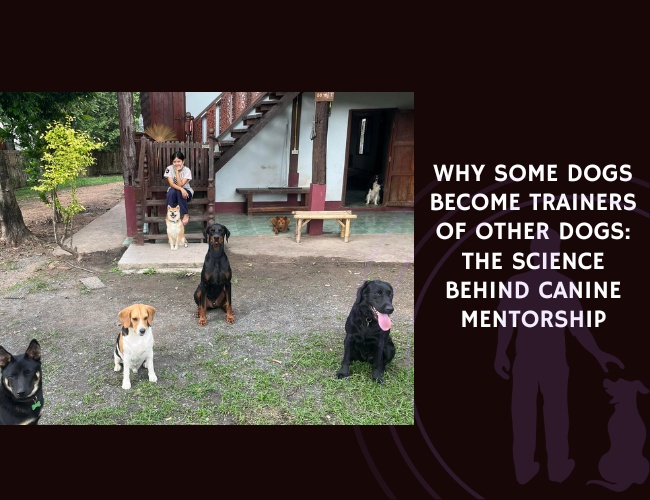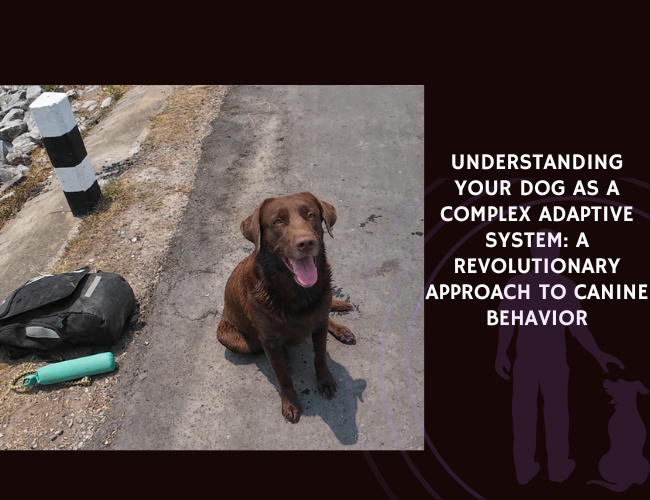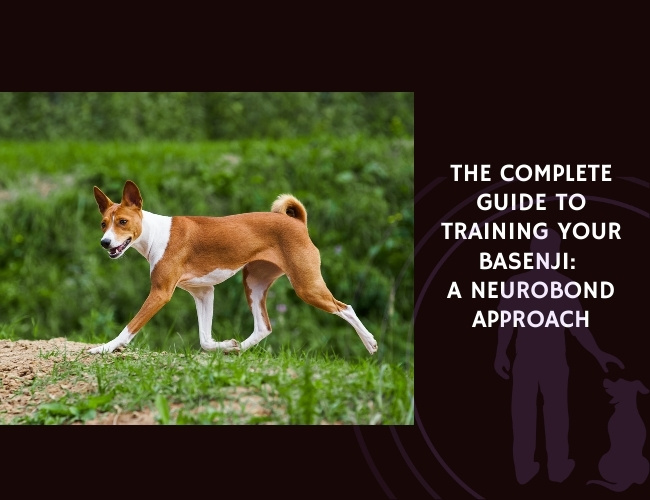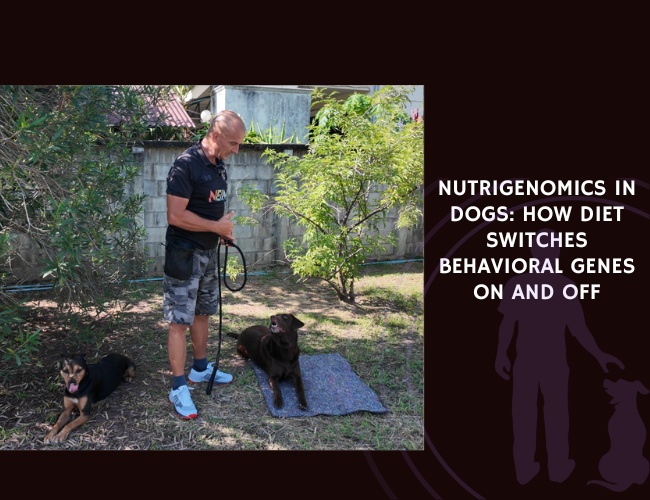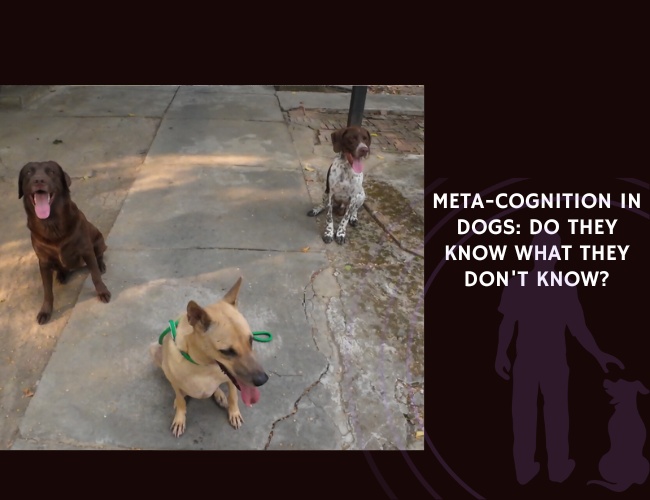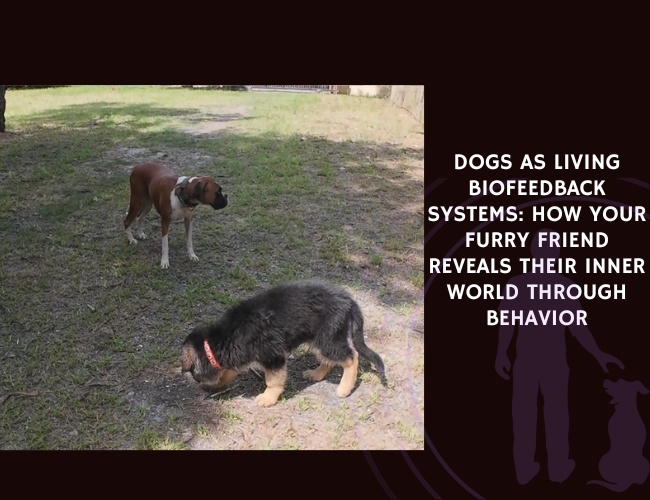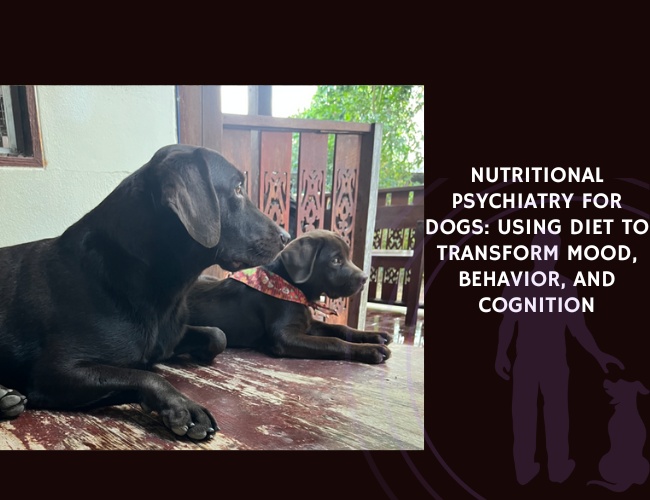Introduction
Have you ever noticed how a confident, well-behaved dog seems to naturally guide and teach younger or less experienced dogs? Perhaps you’ve watched an older dog gently correct a puppy’s overzealous play or observed a seasoned therapy dog showing a newcomer the ropes. This isn’t just coincidence—it’s a fascinating phenomenon rooted in canine biology, evolution, and social learning. Some dogs genuinely become teachers and trainers to their fellow canines, passing along vital skills, behaviors, and social norms that shape the next generation.
The ability of certain dogs to mentor and train others represents one of nature’s most elegant solutions to knowledge transfer. From the amygdala’s role in emotional processing to the mirror neuron system that enables behavioral imitation, dogs possess sophisticated neurological machinery that transforms them into both students and teachers. This natural mentorship has shaped canine evolution for millennia and continues to play a crucial role in how dogs navigate our modern world. 🐾
Character & Behavior
Understanding the Mentor Dog Profile
Not every dog becomes a trainer of other dogs. Those who do typically share specific behavioral and personality traits that make them natural teachers. These mentor dogs often display:
Emotional stability and confidence. Mentor dogs possess what behaviorists call “emotional equilibrium”—they remain calm in various situations and rarely show extreme reactions. This stability allows them to model appropriate responses for more reactive or anxious dogs.
Exceptional social intelligence. These dogs read canine body language with remarkable accuracy, understanding when to intervene, when to demonstrate, and when to step back. They recognize subtle signs of stress, confusion, or fear in other dogs and adjust their behavior accordingly.
Patient persistence. Unlike dogs who quickly lose interest or become frustrated, mentor dogs show remarkable patience when working with less experienced canines. They’ll repeat demonstrations multiple times, adjusting their approach based on the learner’s progress.
The Teaching Instinct
What drives certain dogs to take on this educator role? Research suggests it’s a combination of innate predisposition and learned behavior. Dogs with strong prosocial tendencies—those naturally inclined to help and cooperate—are more likely to engage in teaching behaviors. This mirrors what we see in human teachers: those with inherent empathy and communication skills often gravitate toward educational roles.
Breed influences. While any dog can potentially become a mentor, certain breeds show higher propensities for teaching behaviors:
- Border Collies and Australian Shepherds, with their intense focus and problem-solving abilities
- Labrador and Golden Retrievers, known for their patience and gentle nature
- German Shepherds, combining intelligence with protective instincts
However, mixed breeds and unexpected candidates often surprise us with their teaching abilities, reminding us that individual personality matters more than breed alone. 🧡
Vocalization & Communication
The Language of Canine Instruction
Dogs who train other dogs employ a sophisticated communication system that goes far beyond simple barks and growls. Their teaching toolkit includes:
Modulated vocalizations. Mentor dogs use different tones and volumes to convey specific messages. A low, rumbling growl might say “that’s too rough,” while a higher-pitched bark could mean “pay attention to this.” These vocalizations are notably different from aggressive sounds—they’re instructional rather than threatening.
Strategic silence. Experienced teaching dogs understand when not to vocalize. During demonstrations of calm behavior or when modeling impulse control, they remain notably quiet, allowing their actions to speak louder than any sound could.
Play sounds as teaching tools. The play bow accompanied by specific play vocalizations serves as an invitation to practice social skills in a safe context. Mentor dogs often use exaggerated play signals to help shy or fearful dogs understand that interaction can be enjoyable and non-threatening.
Body Language as Primary Communication
The most profound teaching happens through body language. Mentor dogs are masters of what researchers call “intentional communication”—deliberately using their bodies to convey information:
The teaching stance. When demonstrating a behavior, mentor dogs often adopt a slightly exaggerated posture, making their movements more visible and easier to copy. This is similar to how human teachers might slow down and emphasize movements when teaching a physical skill.
Calming signals as lessons. Experienced dogs frequently demonstrate calming signals—yawning, looking away, sitting down—not just to calm themselves but to teach anxious dogs these self-soothing techniques. They’re essentially saying, “Watch me, this is how you handle stress.”
Space management. Mentor dogs expertly use proximity to teach boundaries. They’ll approach to encourage interaction, then create distance to demonstrate respect for personal space—a crucial lesson for puppies who haven’t yet learned appropriate social distances.
Training & Education
Natural Teaching Methods
The way dogs teach other dogs reveals sophisticated understanding of learning principles that would make any professional trainer proud:
Modeling and demonstration. This is perhaps the most fundamental teaching method dogs employ. A mentor dog will deliberately perform a behavior while ensuring the learner is watching. Social learning theory shows that dogs learn effectively by observing other dogs, with puppies as young as 8 weeks old capable of learning through observation.
Graduated exposure. Skilled mentor dogs instinctively understand the concept of gradual desensitization. When working with a fearful dog, they’ll start with minimal interaction, slowly increasing intensity as the learner becomes more comfortable. This mirrors professional desensitization protocols.
Selective reinforcement. Mentor dogs reinforce appropriate behavior through continued play and interaction while withdrawing attention from inappropriate actions. This natural use of positive and negative reinforcement shapes behavior without the need for human intervention.
The Role of Play in Teaching
Play serves as the primary classroom for canine education. Through play, mentor dogs teach:
Bite inhibition. Adult dogs teach puppies to control bite pressure through play, yelping or ending play when bites are too hard, helping puppies learn this crucial skill. This lesson, learned through countless play sessions, prevents serious injuries throughout the dog’s life.
Social boundaries. During play, mentor dogs demonstrate when to engage and when to disengage, teaching impulse control and respect for others’ limits. They’ll deliberately pause mid-play to show that excitement must be balanced with self-control.
Conflict resolution. When play becomes too intense, experienced dogs model de-escalation techniques—turning away, sitting down, or initiating a different activity. These lessons in managing conflict peacefully are invaluable for young dogs learning to navigate social situations.
Teaching Through Correction
While positive examples form the bulk of canine teaching, appropriate corrections also play a role:
The instructive growl. Unlike aggressive growling, teaching growls are measured and specific, designed to mark the exact moment of inappropriate behavior. The mentor dog immediately returns to neutral or friendly behavior once the message is received.
Physical interruption. Gentle physical interventions—a paw on the back, a nudge with the muzzle—redirect inappropriate behavior without causing fear or pain. These corrections mimic those a mother dog would use with her puppies.
Strategic withdrawal. Perhaps the most powerful correction is the withdrawal of attention and play. When a learner becomes too rough or demanding, the mentor simply walks away, teaching that certain behaviors end social interaction.

Performance & Activities
Real-World Applications
The phenomenon of dogs teaching dogs has practical applications across various fields:
Working dog training. In herding, experienced dogs naturally teach younger dogs through demonstration, with puppies learning complex herding behaviors by running alongside seasoned working dogs. This apprenticeship model has been used for centuries in shepherding communities.
Service dog preparation. Experienced service dogs can demonstrate specific tasks to dogs in training, though formal task training typically requires human guidance to meet specific disability-related needs. The presence of a calm, working service dog helps trainees understand the focused demeanor required for public access work.
Therapy dog modeling. In therapy settings, experienced dogs demonstrate appropriate behavior around medical equipment, unusual sounds, and vulnerable populations. New therapy dogs learn by observing how veterans remain calm during sudden movements or loud noises.
Specialized Teaching Scenarios
Multi-dog households. In homes with multiple dogs, natural hierarchies often develop where older or more experienced dogs guide newcomers. This organic mentorship helps maintain household harmony and establishes routines.
Dog daycare dynamics. Well-run facilities often use “helper dogs”—balanced, social dogs who assist in integrating new or shy dogs into the group. These canine ambassadors demonstrate that the environment is safe and play is welcomed.
Breeding programs. Responsible breeders recognize the value of keeping puppies with well-adjusted adult dogs beyond just their mothers. These additional role models provide diverse teaching styles and experiences.
Performance Indicators
How can we recognize when effective teaching is taking place? Look for these signs:
Synchronized behavior. The learner begins mirroring the mentor’s actions, from play styles to resting positions. This synchronization indicates successful knowledge transfer.
Confidence building. Previously fearful or anxious dogs show increased confidence after spending time with a mentor, approaching new situations with less hesitation.
Skill acquisition. The learner demonstrates new behaviors or improved versions of existing behaviors after observing the mentor, without direct human training intervention.
Wise. Patient. Born to Lead.
Some dogs don’t just learn—they teach.
In every group of canines, there’s often one who quietly steps forward—not to dominate, but to guide. This dog doesn’t bark commands. They show. They wait. They correct gently. They carry the wisdom of lived experience and the emotional intelligence to shape others without force. These dogs are not just companions; they’re canine mentors—natural-born trainers.
Leadership without ego.
True mentor dogs don’t demand obedience—they invite it. Through calm presence, strategic silence, and subtle corrections, they show younger or anxious dogs how to live, play, and cope. They don’t react—they read the room. And they teach, not because they have to, but because something deep within them understands: calm spreads. Confidence teaches. Peace can be learned.
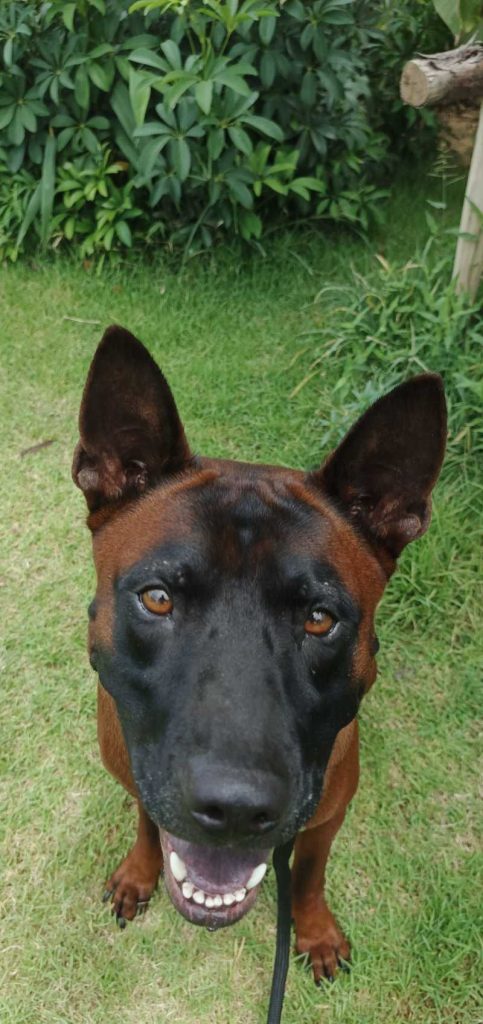


The legacy of the quiet teacher.
These dogs shape generations. Not through loud corrections, but through repetition, patience, and presence. They pass on emotional regulation, social timing, and the art of coexistence. And when their teaching days are done, their legacy remains—in every pup they steadied, every fight they prevented, every anxious tail they calmed. 🧡
Nutritional Recommendations
Fueling the Teaching Brain
Dogs who serve as mentors to others have unique nutritional needs that support their cognitive and emotional demands:
Omega-3 fatty acids for cognitive function. Teaching requires significant mental energy. Foods rich in DHA and EPA support brain health and may enhance the cognitive flexibility needed for effective teaching. Consider supplements or foods containing:
- Wild-caught fish oils
- Algae-based omega-3s for dogs with fish sensitivities
- Whole fish like sardines or mackerel
B-complex vitamins for stress management. Mentor dogs often deal with unpredictable learners, requiring robust stress-response systems. B vitamins support neurological function and help maintain emotional equilibrium:
- B1 (thiamine) for nerve function
- B6 for neurotransmitter production
- B12 for overall neurological health
Antioxidants for neural protection. The mental demands of teaching generate oxidative stress. Antioxidant-rich foods protect neural tissue and support long-term cognitive health:
- Blueberries and other deeply colored fruits
- Leafy greens appropriate for dogs
- Vitamin E from quality sources
Feeding Schedules That Support Teaching
Pre-teaching nutrition. A light meal 2-3 hours before teaching activities provides steady energy without causing sluggishness. This mirrors the needs of human athletes and performers.
Post-teaching recovery. After intensive teaching sessions, a protein-rich meal supports recovery and maintains muscle mass, especially important for dogs who use physical demonstration in their teaching.
Hydration considerations. Teaching dogs often engage in more physical activity and vocalization than typical pets. Ensure constant access to fresh water and consider electrolyte supplementation during intensive teaching periods.
Health Concerns
The Neurological Basis of Teaching Ability
Understanding the brain structures involved in teaching helps us recognize and support this behavior:
Mirror neuron system. Dogs likely possess mirror neurons that fire both when performing and observing actions, enabling them to learn through imitation and potentially teach through demonstration. This neurological foundation makes observational learning and teaching possible.
Amygdala function and emotional regulation. The amygdala plays a crucial role in processing emotions and social cues. Dogs with well-regulated amygdala function can remain calm while teaching, even when dealing with challenging learners.
Prefrontal cortex development. This brain region, associated with executive function and impulse control, must be well-developed for effective teaching. It allows mentor dogs to inhibit their own impulses while focusing on the learner’s needs.
Health Conditions That May Affect Teaching Ability
Cognitive dysfunction syndrome. Older dogs who previously excelled at teaching may lose this ability as cognitive function declines. Watch for signs like disorientation, changed social interactions, or loss of previously learned behaviors.
Chronic stress and cortisol. Dogs constantly correcting others or dealing with difficult learners may experience elevated cortisol levels. This can lead to:
- Suppressed immune function
- Digestive issues
- Behavioral changes
Sensory impairments. Hearing or vision loss can significantly impact a dog’s ability to teach, as they may miss important cues from learners or be unable to demonstrate behaviors effectively.
Supporting Long-Term Teaching Health
Regular veterinary assessments. Annual or bi-annual check-ups should include cognitive function evaluation for dogs who serve as mentors. Early detection of issues allows for intervention.
Stress management protocols. Provide mentor dogs with:
- Quiet retreat spaces away from learners
- Regular “off-duty” time
- Calming activities like sniff walks or puzzle toys
Joint health maintenance. Dogs who demonstrate physical behaviors repeatedly may experience increased joint wear. Preventive care includes:
- Appropriate exercise to maintain muscle mass
- Joint supplements starting at middle age
- Regular assessment of gait and movement
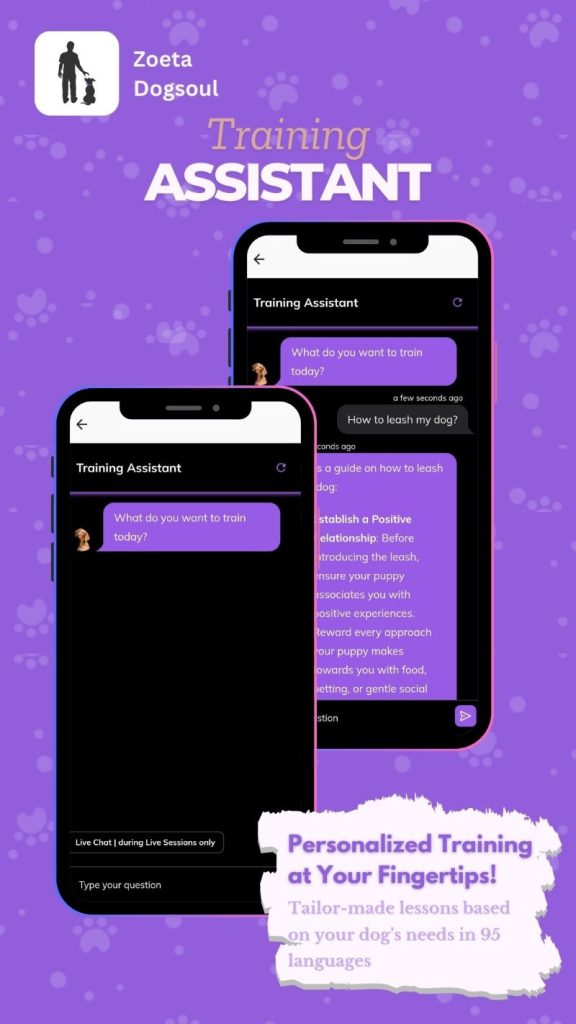
Lifestyle & Environment
Creating Optimal Teaching Environments
The physical and social environment significantly impacts a dog’s ability to teach effectively:
Space configuration. Teaching dogs need environments that allow for:
- Clear sight lines for demonstration
- Escape routes for over-stimulated learners
- Quiet zones for processing and rest
Environmental enrichment. A stimulating but not overwhelming environment supports teaching. Include:
- Various textures and surfaces for sensory experience
- Interactive toys that can be used in teaching games
- Natural elements like grass, sand, or shallow water
Social structure considerations. In multi-dog environments, recognize and support natural teaching relationships while preventing burnout:
- Rotate teaching responsibilities among capable dogs
- Provide separate feeding and high-value resource areas
- Monitor for signs of teaching fatigue
The Human Role in Supporting Canine Teachers
While dogs can teach each other naturally, human support enhances this process:
Recognition and reinforcement. When you observe effective teaching behavior, quietly reinforce it with calm praise or treats after the teaching moment ends. This encourages continued mentorship.
Protective intervention. Step in when:
- A learner becomes too demanding or rough
- The teaching dog shows signs of stress or exhaustion
- Safety concerns arise
Structured opportunities. Create situations that facilitate teaching:
- Controlled introductions of new dogs
- Parallel walking sessions
- Supervised play groups with mixed experience levels
Environmental Stressors to Avoid
Overcrowding. Too many dogs in a space overwhelms both teachers and learners, preventing effective knowledge transfer.
Constant stimulation. Teaching dogs need quiet processing time. Environments with constant noise, movement, or activity exhaust their cognitive resources.
Forced interactions. Never force a dog to teach or interact. Natural teaching relationships develop organically and forcing them creates stress for all involved.
Senior Care
The Aging Mentor
As teaching dogs age, their role often shifts from active demonstrator to wise counselor:
Transitioning teaching styles. Older dogs may shift from physical demonstrations to more subtle teaching methods:
- Using calming presence rather than active play
- Employing vocalizations more than physical intervention
- Serving as emotional anchors for anxious dogs
Cognitive preservation. Keep aging mentors mentally engaged:
- Provide novel but manageable challenges
- Maintain social interactions with respectful younger dogs
- Use puzzle feeders and scent work to stimulate cognitive function
Physical accommodations. Support senior teachers with:
- Non-slip surfaces for demonstration areas
- Raised beds for comfortable observation posts
- Easy access to water and quiet spaces
Recognizing Retirement Readiness
Signs it’s time to reduce teaching duties:
- Increased irritability with learners
- Avoidance of previously enjoyed teaching interactions
- Physical limitations preventing safe demonstrations
- Cognitive changes affecting judgment
Honoring the senior teacher. When a dog can no longer actively teach:
- Allow them to observe without pressure to participate
- Let them choose their level of involvement
- Protect them from overly enthusiastic learners
- Value their presence as a calming influence
Legacy Preservation
Documentation. Record (through video or written notes) the teaching techniques of exceptional mentor dogs. This information can guide future training approaches.
Mentorship chains. When possible, allow experienced teachers to work with middle-aged dogs who can carry on their teaching methods, creating multi-generational knowledge transfer.
Celebrating contribution. Acknowledge the invaluable role these senior dogs have played in shaping younger generations. Their impact extends far beyond their active teaching years. 🐾
Conclusion: Is This Dog Right for You?
The phenomenon of dogs teaching other dogs represents one of nature’s most elegant solutions to knowledge transfer. These canine mentors, equipped with sophisticated neurological systems including mirror neurons and advanced social cognition, naturally pass along crucial life skills to the next generation. From teaching bite inhibition through play to demonstrating complex working behaviors, these four-legged educators shape the behavioral development of countless dogs.
Understanding and supporting dogs who exhibit teaching behaviors enriches our appreciation of canine intelligence and social complexity. Whether in professional settings like service dog training, working environments like herding operations, or simple multi-dog households, these natural teachers play an invaluable role. They demonstrate that dogs possess not just the ability to learn, but the remarkable capacity to ensure others learn as well.
For those fortunate enough to share their lives with a natural canine teacher, the responsibility involves recognizing this gift and providing appropriate support. This means ensuring proper nutrition for cognitive function, managing stress levels, creating suitable environments for teaching interactions, and knowing when to protect these generous souls from overtaxing themselves. The investment in supporting a teaching dog pays dividends not just in the lives of the dogs they mentor, but in the deeper understanding of canine cognition it provides us.
As we continue to study this fascinating aspect of dog behavior, we gain insights that transform our approach to training, socialization, and canine welfare. The dogs who naturally step into teaching roles remind us that some of the most profound education happens not in formal training sessions, but in the patient, persistent guidance of one dog helping another navigate the world. In recognizing and honoring these canine educators, we acknowledge that the teaching instinct—that generous impulse to help others learn and grow—transcends species boundaries and connects us all. 🧡

